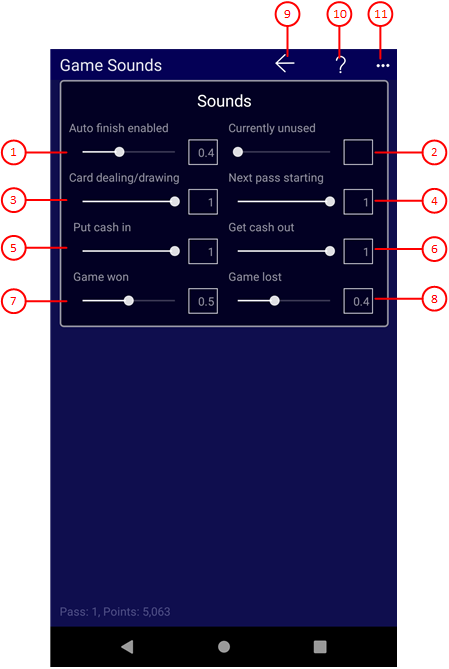Figure 15 shows the game sounds pane. You may change here the volume of the speech output and the volume of each other game sound individually. However, on the current device, the sounds are output only if you selected the "Enable sounds" option of the local settings. The game sounds belong to the local settings and therefore have to be set individually on each device.
When you click any circled number in the picture below, the browser will scroll to the explanation of the numbered item. To return to the picture, click the back button of the browser.
Figure 15: Game Sounds Pane
- Auto finish enabled
This sound is created when the automatic finishing is enabled. You may move the slider between 0.0 and 1.0. Default value is 1.0, which means maximum volume.
- Currently unused
This slider is not used currently.
- Card dealing/drawing
This sound is created when cards are drawn or turned from the start pile. You may move the slider between 0.0 and 1.0. Default value is 1.0, which means maximum volume.
- Next pass starting
This sound is created when a new pass is started. You may move the slider between 0.0 and 1.0. Default value is 1.0, which means maximum volume.
- Put cash in
This sound is created when cash or points are withdrawn. You may move the slider between 0.0 and 1.0. Default value is 1.0, which means maximum volume.
- Get cash out
This sound is created when you earn cash or points. You may move the slider between 0.0 and 1.0. Default value is 1.0, which means maximum volume.
- Game won
This sound is created when you have won the game. You may move the slider between 0.0 and 1.0. Default value is 1.0, which means maximum volume.
- Game lost
This sound is created when you have lost the game. You may move the slider between 0.0 and 1.0. Default value is 1.0, which means maximum volume.
 If you click this button, the pane previously shown is made visible again. If no previous pane exists, the current overlay pane disappears only. Alternatively, you can press the Alt+Left-Arrow key combination.
If you click this button, the pane previously shown is made visible again. If no previous pane exists, the current overlay pane disappears only. Alternatively, you can press the Alt+Left-Arrow key combination.
 Click this button to overlay the game view with the help pane showing online information about the current view content. Alternatively, you can press the F1 key on the keyboard. The help function can be used only if an internet connection is available.
Click this button to overlay the game view with the help pane showing online information about the current view content. Alternatively, you can press the F1 key on the keyboard. The help function can be used only if an internet connection is available.
 If the current width of the game view does not allow to display all primary commands of the app bar as buttons, the overhanging commands are moved to the list of secondary commands. That list can be opened by pressing this button. Pressing this button also causes the app bar to be displayed in its maximum size. When in maximum size, the app bar shows a description below each button shape. In the case of overlay panes, commands for all subsequent panes are displayed here after a horizontal line, so that you can reach all subsequent panes directly. After another horizontal line, special commands may be displayed for the respective pane.
If the current width of the game view does not allow to display all primary commands of the app bar as buttons, the overhanging commands are moved to the list of secondary commands. That list can be opened by pressing this button. Pressing this button also causes the app bar to be displayed in its maximum size. When in maximum size, the app bar shows a description below each button shape. In the case of overlay panes, commands for all subsequent panes are displayed here after a horizontal line, so that you can reach all subsequent panes directly. After another horizontal line, special commands may be displayed for the respective pane.
